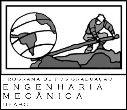Banca de DEFESA: HENRIQUE LOPES DE CASTRO
Uma banca de DEFESA de MESTRADO foi cadastrada pelo programa.DISCENTE : HENRIQUE LOPES DE CASTRO
DATA : 02/10/2020
HORA: 10:00
LOCAL: a definir
TÍTULO:
NUMERICAL STUDY OF CONJUGATE NATURAL CONVECTION OVER VERTICAL AND INCLINED PLATE WITH PROTRUDING HEAT SOURCES
PÁGINAS: 76
RESUMO:
This work presents a numerical simulation of conjugate natural-convection heat transfer in a plate for vertical and inclined positions containing protruding heat sources. This problem arises as a typical concern while designing systems that involves buoyance-driven flows, such as in electronic circuit boards. The plate contains seven
elements uniformly distributed over the upper surface and an insulation layer at bottom that guarantees convection mechanism to occurs only in the upper surface. This research spent efforts in applying a numerical method and validating it with experimental data available. Using a bi-dimensional, finite-volume method, time
averaged Navier-Stokes equations were solved including the k-ω turbulence model. Fluid was assumed incompressible and all physical properties constant, except for buoyance terms obtained from Boussinesq approximation. Almost every simulation is at steady state operation, despite one transient case executed. By means of temperature distributions, streamlines and Nusselt number results were compared and discussed. This investigation addressed effects such as the conduction in substrate, the sources emissivity, the power input and plate inclination angle. When compared to experiments, results showed a good agreement, even with some locations pointing 9.8% error in temperature difference. No transient effect was found in the case during
and after the three hours of operation needed to reach steady state. Conduction in substrate represented a significant amount of the dissipated power. Varying the sources’ emissivity, from 0.1 to 0.83, maximum temperature of elements varied up to 25%. While increasing power dissipation, convective performance improved together with Grashof number, but also raised sources temperature. Inclined positions pointing downwards only reduced convective coefficient while upwards inclinations results improved only when plate reaches 60° of inclination.
MEMBROS DA BANCA:
Presidente - Interno ao Programa - 1065284 - ANDRE DAMIANI ROCHA
Membro Titular - Examinador(a) Interno ao Programa - 1985515 - ANTONIO GARRIDO GALLEGO
Membro Titular - Examinador(a) Externo à Instituição - MARCELO MOREIRA GANZAROLLI - UNICAMP
Membro Suplente - Examinador(a) Interno ao Programa - 1604343 - KARL PETER BURR




